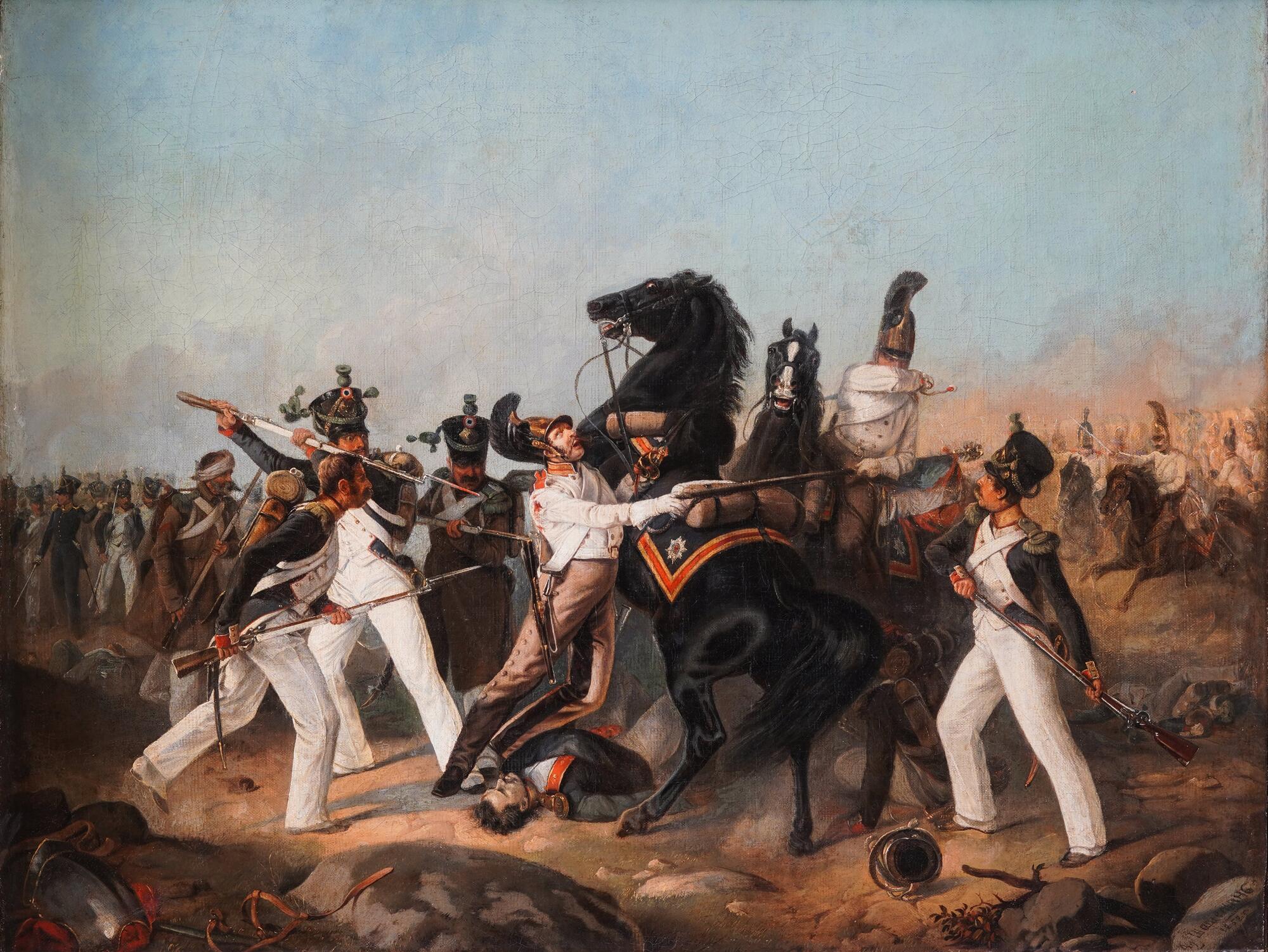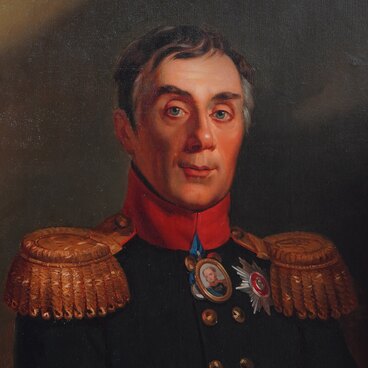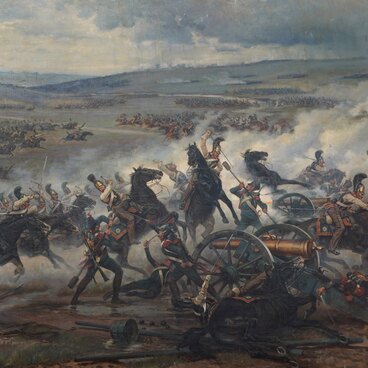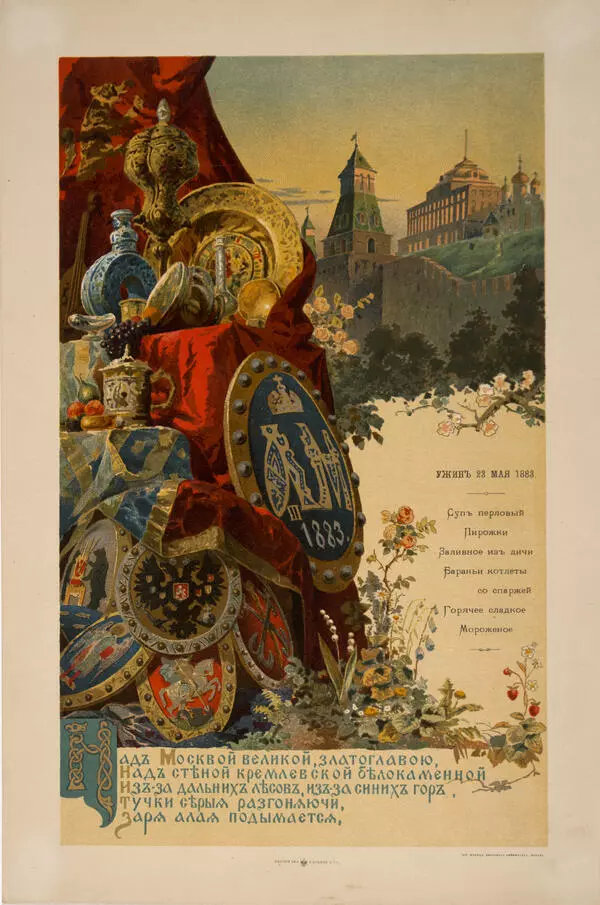The Battle of Austerlitz that took place on November 20 (December 2), 1805 is also known as the Battle of Three Emperors: Alexander I (Russia) and Francis II (Austria) on one side and Napoleon I Bonaparte on the other. It served not only as an indication of the opposing sides, but also as a reminder that the commander of the Russian army, General of the Infantry Mikhail Illarionovich Kutuzov, was in fact removed from command by the emperor.
As a result of inadequate leadership, the offensive of the Russian-Austrian troops on the French right flank completely failed, the Allied center and left flank were split and demolished, and the right flank retreated. The battle of Austerlitz was a huge defeat for Russia and personally for Emperor Alexander I.
However, the Russian troops proved their courage during the battle. The Life Guards Horse Regiment, commanded by Major General Ivan Fedorovich Yankovich de Mirievo, especially distinguished itself. The Life Guards had to cover the retreat of the Semyonovsky and Preobrazhensky regiments; while executing the task, they crashed into the infantry square of the 4th line regiment led by French Major Auguste Bigarré with their sabers bared. Under the blows of the swords, the French eagle-bearer, Senior Sergeant Gouvion Saint-Cyr, also fell to the ground. The enemy’s banner was picked up by Private Gavrilov from the 2nd squadron of Lieutenant Khmelyov. Gavrilov was stabbed with French bayonets, but managed to pass the eagle to another private — Omelchenko. Privates Ushakov and Lazunov came to the rescue, and the trophy remained in the hands of the Russians. It was the only trophy of the Austerlitz Battle. It was delivered to the commander, Grand Duke Konstantin Pavlovich.
For their heroic feat, the three Horse Guards received non-commissioned officer’s shoulder straps, and in 1807 — the newly established Insignia of the Military Order. On September 28, 1807, the Life Guards Horse Regiment was awarded five St. George standards with the highest rescript (a letter from the emperor).
The lost, but vivid battle interested many battle artists. The Russian painter Adolf Iosifovich Baudet-Charlemagne (1826–1901) depicted the key moment in the capture of the French banner: the eagle-bearer Saint-Cyr lies on the ground, private Gavrilov, who is already being poked by bayonets, holds out the banner to his fellow soldier. He accepts the trophy while simultaneously repelling the enemy’s attack.
As a result of inadequate leadership, the offensive of the Russian-Austrian troops on the French right flank completely failed, the Allied center and left flank were split and demolished, and the right flank retreated. The battle of Austerlitz was a huge defeat for Russia and personally for Emperor Alexander I.
However, the Russian troops proved their courage during the battle. The Life Guards Horse Regiment, commanded by Major General Ivan Fedorovich Yankovich de Mirievo, especially distinguished itself. The Life Guards had to cover the retreat of the Semyonovsky and Preobrazhensky regiments; while executing the task, they crashed into the infantry square of the 4th line regiment led by French Major Auguste Bigarré with their sabers bared. Under the blows of the swords, the French eagle-bearer, Senior Sergeant Gouvion Saint-Cyr, also fell to the ground. The enemy’s banner was picked up by Private Gavrilov from the 2nd squadron of Lieutenant Khmelyov. Gavrilov was stabbed with French bayonets, but managed to pass the eagle to another private — Omelchenko. Privates Ushakov and Lazunov came to the rescue, and the trophy remained in the hands of the Russians. It was the only trophy of the Austerlitz Battle. It was delivered to the commander, Grand Duke Konstantin Pavlovich.
For their heroic feat, the three Horse Guards received non-commissioned officer’s shoulder straps, and in 1807 — the newly established Insignia of the Military Order. On September 28, 1807, the Life Guards Horse Regiment was awarded five St. George standards with the highest rescript (a letter from the emperor).
The lost, but vivid battle interested many battle artists. The Russian painter Adolf Iosifovich Baudet-Charlemagne (1826–1901) depicted the key moment in the capture of the French banner: the eagle-bearer Saint-Cyr lies on the ground, private Gavrilov, who is already being poked by bayonets, holds out the banner to his fellow soldier. He accepts the trophy while simultaneously repelling the enemy’s attack.






